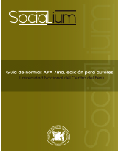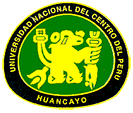Public policies on gender violence at the Chilca District Women's Emergency Center
DOI:
https://doi.org/10.26490/uncp.sl.2019.3.1.523Keywords:
gender violence, patriarchy, hegemonic masculinity, hegemonic femininityAbstract
The research’s objective was to know the factors that limit the effectiveness in the application of public policies on gender violence in the district of Chilca and why they fail to reduce violence. It has been developed a qualitative research, which used the interview as instrument; this was applied to women who have been assisted in the Centro de Emergencia Mujer of the mentioned district and to professionals from that institution who execute gender policies on violence. The study deepens the structural factors that originate gender violence, such as the patriarchal, authoritarian and machismo culture as well as the construction of hegemonic femininity and masculinity. Moreover, the application of gender public policies on violence in the district of Chilca is addressed. The main results reveal that women victims come from homes characterized by an authoritarian culture and violence; this situation is reinforced in schools. On the other hand, public policies do not adequately address the prevention of violence, the Centro de Emergencia Mujer emphasizes assistance, but institutions, such as the Policía Nacional and the Poder Judicial, do not have an immediate response in the sanction and eradication of violence. Therefore, it has been concluded that intersectoriality in public policies is deficient; it has been likewise verified that the gender approach has not been appropriately mainstreamed in these policies. Other factors that limit the effectiveness of public policies on violence are the lack of adequate budget and infrastructure, and the participation of public operators who are poorly sensitized and trained in gender equity.
References
Fiestas, F., Rojas, R., Gushiken, A., y Gozzer, E. (2012). ¿Quién es la víctima y quién el agresor en la violencia física entre parejas? Estudio epidemiológico en siete ciudades del Perú. Perú: Revista Perú Medicina Experimental Salud Publica.29 (1)
Mascaro, P., García, S., y Munares, O. (2012). Violencia basada en género en zonas urbanas y urbano-marginales de Lima y Callao, 2007-2010. Lima: Instituto Nacional Materno Perinatal. Anales de la Facultad de Medicina, 73 (2)
Ministerio de la Mujer y Poblaciones Vulnerables. Conceptos Fundamentales Para La Transversalización del enfoque de género Lima PERÚ 20
Rico, N. (1996). Violencia de género: Un problema de derechos humanos. Serie Mujer y Desarrollo 16, México: CEPAL.
Saffioti, H. (2001) Centro de Referencia Clarice Lispector (CRCL), Brasil: Recife.








.jpg)















